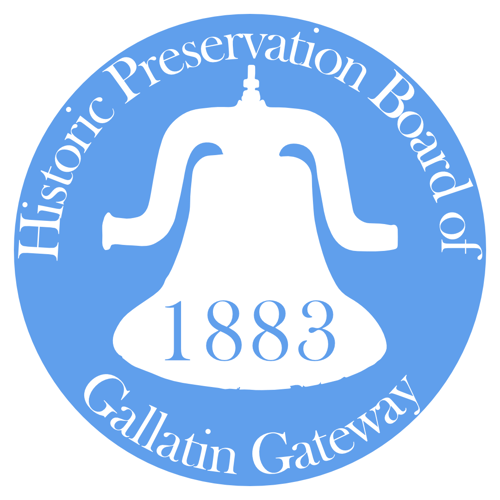Learn more about our historic town...
The History of Gallatin Gateway
Gallatin Gateway reflects a legacy of area loggers and homesteading ranchers, some who stayed briefly and others who bore descendants still here today. The area was first known as Slabtown, for the vertical slab (in board-and-batten fashion) construction of several surrounding homes. On July 13, 1883, however, the town officially became known as Salesville, when John J. Tomlinson platted a regular grid of streets (4 by 4) that nestle up to the west branch of the Gallatin River. From west to east - Lynde to Bench - and south to north – Sales to Tracy. The names tell of the earlier settlement by Zachariah Sales and his sawmill by the river. Sales, who had traveled from Wisconsin via wagon along the Bozeman Trail in 1865, brought his logging skills with him to the Gallatin Valley. His expanded family helped him grow his business to include logging camps throughout the Gallatin Canyon, floating logs down the river from as far south as Taylor Fork. His sawmill and mill race operated on the east side of the river and stood until demolished c.1915. Tomlinson bought Sales’ mill and logging operation in 1887, freeing Sales to settle in a less populated area in the Flathead Valley.
Since Tomlinson’s platting in 1883, the town filled out with people and buildings, including the essentials - church, school, bank, and stores - to support the influx of homesteaders running ranches in the valley. The increase in ranching and farming in this fertile land offset the decline in the Gallatin Valley lumber industry in the early 1900s. Proof of this increasing economic growth was the arrival of the Gallatin Valley Electric Railway Company in 1909. Salesville, the end of the line, had a train depot to serve the four to five scheduled roundtrips per day. The line connected the small town with Ferris (now Bozeman) Hot Springs and the City of Bozeman. This greater connectivity, along with healthy agriculture yields, likely contributed to the prosperity documented in 1912, when Salesville had two general stores, a grain elevator, a bank, drug store, newspaper, livery barn, lumber yard, blacksmith shop, barber shop, hotel, a meat market, a doctor, three saloons, and post office.
The
1913-1914 construction of a two-story brick schoolhouse, supplanting a prior wood-framed building on the same site of 100 Mill Street, marked Salesville’s stability and signaled its use as a hub for the smaller surrounding communities which were consolidated (up through 1964) into the Salesville School District. In response to population growth, this brick edifice has been added onto four times over the ensuing years. The school’s prominent location near the east entry into town indicates the importance placed on education. The main commercial district extends to the west down the length of Mill Street, towards the bridge over the Gallatin River. Salesville saw increased activity in 1927, when the Milwaukee Railroad built the Gallatin Gateway Inn north of town. The train deposited travelers at the inn, where they loaded the famous yellow buses for their trip to Yellowstone National Park, just 80 miles south through Gallatin Canyon. Overnight accommodations and a gracious dining room were welcoming respites for road-weary tourists. Salesville latched onto this successful venture by taking on a new name – Gallatin Gateway. Gallatin Gateway continues to thrive as the heart of a robust ranching community and growing residential developments, while still conveying its rich history.
